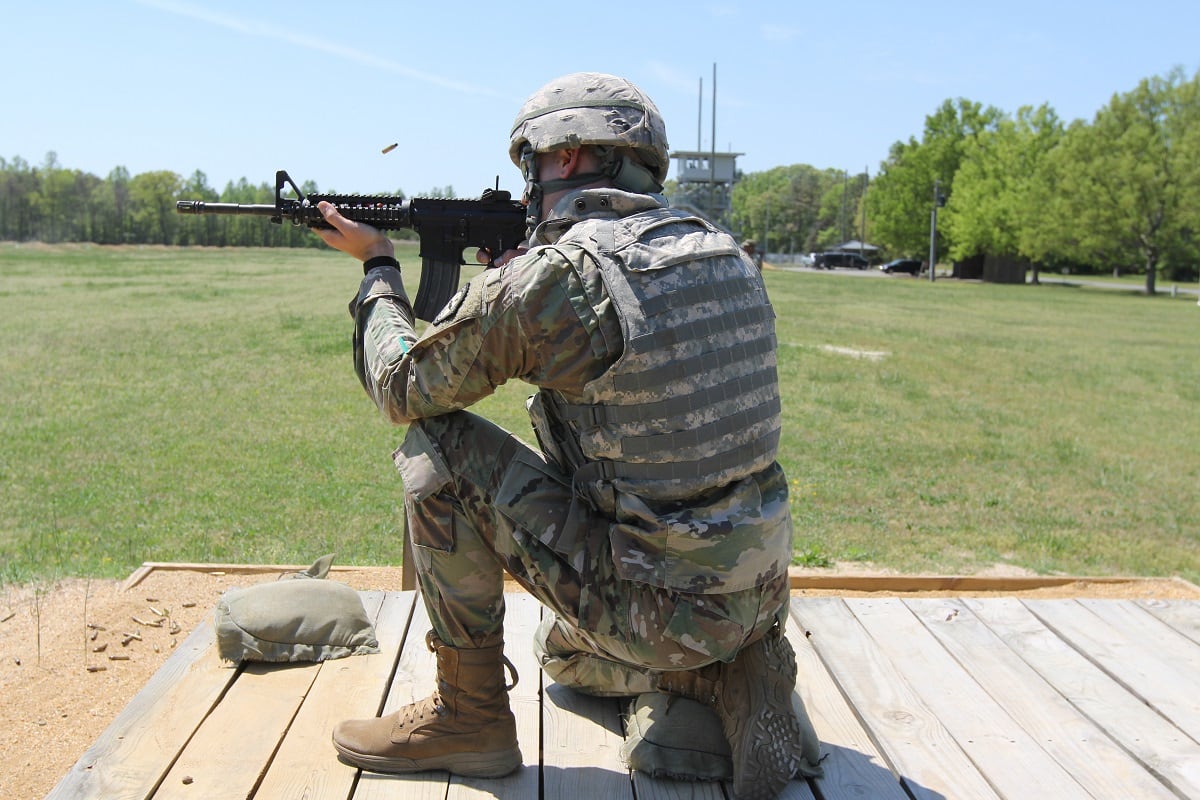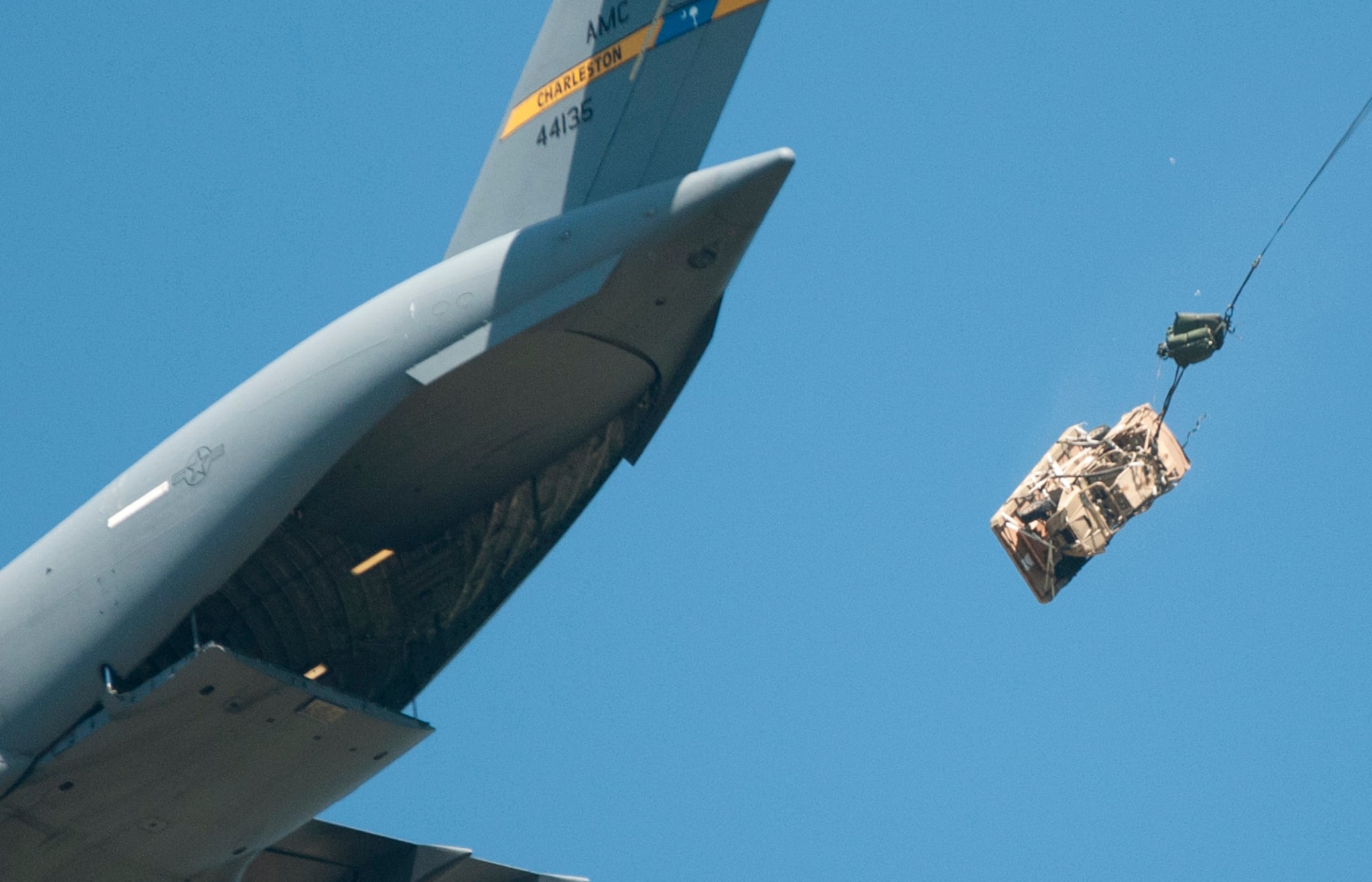The Army is testing and developing better ways to get supplies to soldiers in far-flung, austere places in both big and small packages.
Recent work by soldiers with the 82nd Airborne Division at Fort Bragg, North Carolina, tested a parachute system that delivers equipment as large as a vehicle at lower altitudes and with fewer parachutes.
Members of the 151st Quartermaster Company, 11th Quartermaster Company and 82nd Financial Management Support Unit, 82nd Sustainment Brigade, did those tests with the Advanced Low Velocity Airdrop System-Dual Row Airdrop System.
The G-16 cargo parachute will give loadmasters a way to airdrop at lower altitudes. That will reduce the number of parachutes they need for those types of loads.
RELATED

“The G-16 cargo parachute will provide expeditionary delivery of military equipment and supplies which in return allows operational units to perform speedy recovery before their follow-on mission,” said Sgt. 1st Class Juan Cruz, ALVADS-DRAS Test Noncommissioned Officer with the U.S. Army Operational Test Command’s Airborne and Special Operations Test Directorate.
The ABNSOTD conducts the Army’s operational testing for joint airborne contingency and special operations forces.
“It is a great opportunity to be part of operational testing and to see new equipment that is the future of heavy parachutes in the rigger field,” said Spc. Nicholas Rowan, 151st Quartermaster Company.
Another effort would give airdrops a more nimble way to deliver supplies at longer ranges to soldiers, especially in smaller packages for those stretched out across a near-peer battlefield.
The Autonomous Aerial Resupply into Dense, Urban, Complex Terrain, or AAIRDUCT, started in March 2018 and expects to conclude by fiscal year 2021.
The tech demo they’re providing through the Army’s Combat Capabilities Development Command Soldier Center aims to find multiple “areal delivery technologies” that would support urban operations.
Those include the Multi-Use Aerial Dispersing System, which can be used to deliver scatterable media or aid supplies to a civilian population.
And two new variants of the Joint Precision Aerial Delivery System are being developed to autonomously deliver cargo from 10- to 500-pound payloads.
But it’s more than just a smaller load, it’s a new way to guide in packages when enemy troops are jamming GPS.
“The JCTD will focus on navigation in a GPS-denied environment, enhanced parachute control to increase accuracy and the ability to autonomously drop sensors from a JPADS to reduce the need for traditional hand emplacement,” according to a CCDC release.
But that will require advancements in airdrop mission planning.
The researchers conducted their first operational tests in August, using MADS to deliver psychological operations materials specific to U.S. Central Command.
They have a second operational demo planned for fiscal year 2021 that will focus on small unit resupply and sensor emplacement in an urban environment.
Todd South has written about crime, courts, government and the military for multiple publications since 2004 and was named a 2014 Pulitzer finalist for a co-written project on witness intimidation. Todd is a Marine veteran of the Iraq War.
